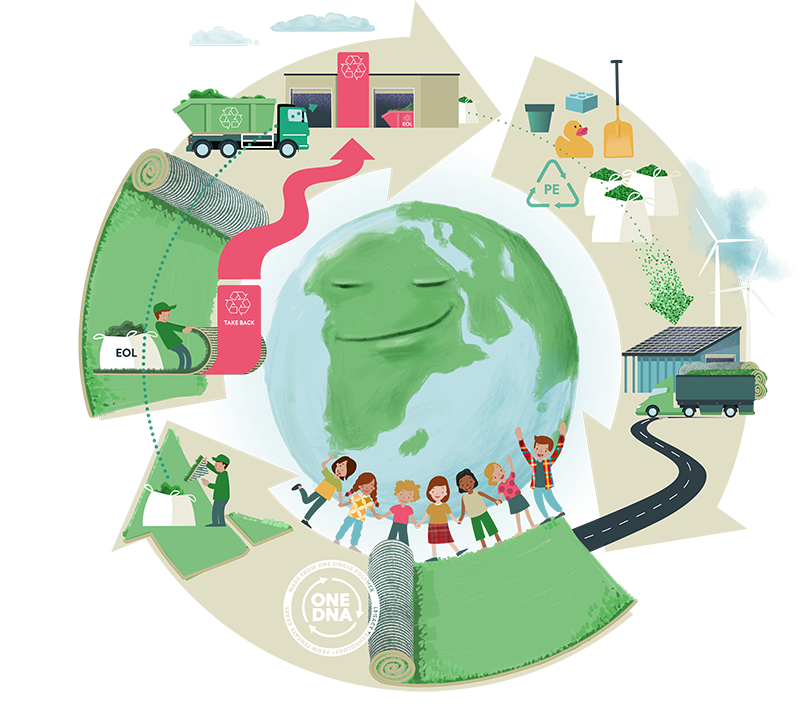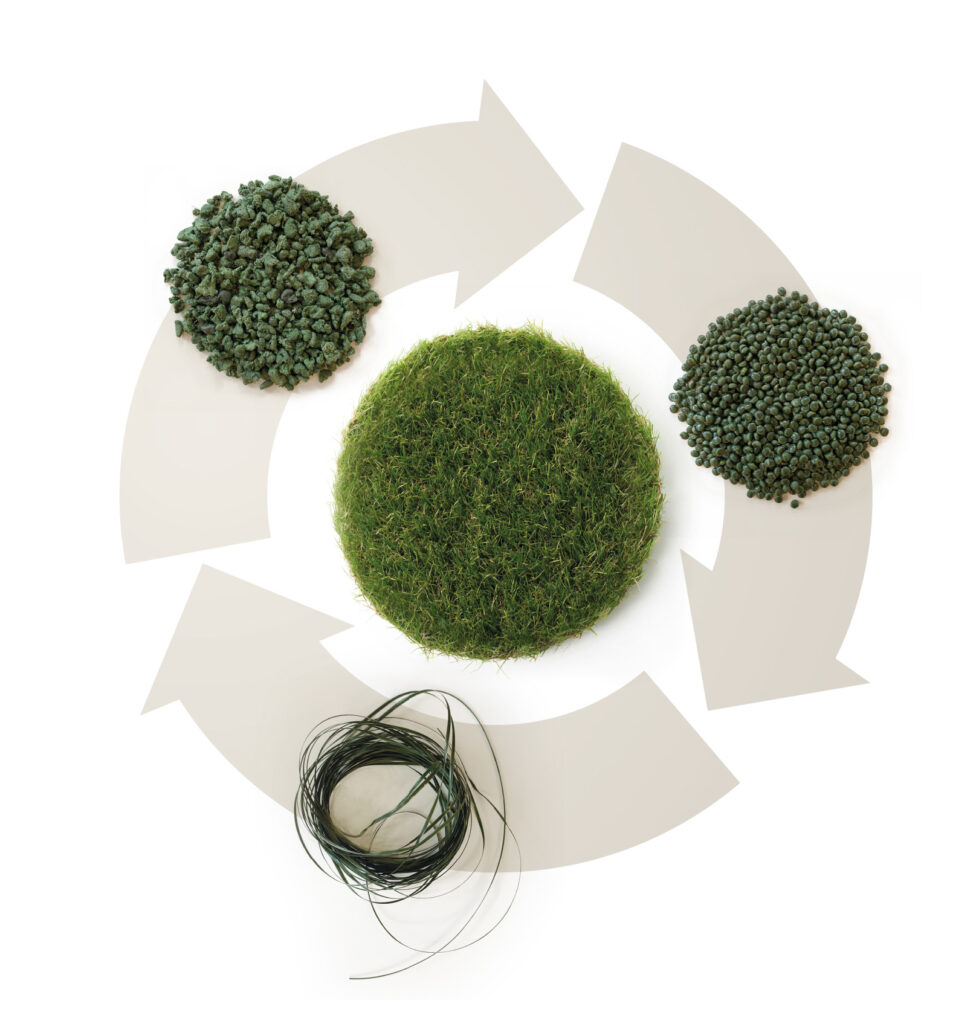ONE-DNA™ technology
ONE-DNA™️ is more than just technology; it represents a progressive movement. Opting for ONE-DNA™️ artificial grass means embracing an avant-garde approach. This technology focuses on preserving end-of-life value, which is crucial for global sustainability goals. ONE-DNA™️ technology emphasizes minimizing resource usage, reducing CO2 emissions, and maximizing recyclability. By choosing mono-material artificial grass, you send a strong signal for sustainability and strengthen your market position. Choose progress, choose ONE-DNA™️ artificial grass.

Sustainability
Meets Innovation
Artificial grass is usually made from a mix of various materials like PP, PE, Latex, or PU. Producing these types of grass consumes significant energy, and their complex composition makes them difficult or even impossible to recycle.
ONE-DNA™ artificial grass is distinguished by its unique mono-material property; it consists entirely of just one raw material: 100% PE. Being made from one polymer enables high-quality recycling, reducing both raw material use and waste. Moreover, this grass is produced in an energy-efficient manner, resulting in a much lower CO2 footprint compared to conventional artificial grass.
Proven by science
Need more certainty? Real certainty starts with undeniable facts. Everything we say is backed up by scientific research for your confidence and success. Discover our transparent, results-driven approach below.
ONE-DNA™ animation
Discover the benefits of ONE-DNA™ in this animation. See how this groundbreaking technology paves the way towards a more sustainable future with mono-material artificial grass.

Enriched by
Circular Certainty
Striving for sustainability requires not only promises but also tangible evidence. Discover the difference with ONE-DNA™️ artificial grass, where SGS Intron, a prominent independent testing and certification institute, has determined its circular value.
In-depth analyses have shown that this artificial grass sets a new standard for circularity. It is ready to be reused in high-value PE applications, ranging from brand-new artificial grass to other products of similar high value. This is not downcycling; it is the embodiment of value retention. Step into a proven greener future.
Importance value retention
Value retention is the key to closing the material loop and achieving a truly circular economy, with a focus on sustainability, efficiency and minimising environmental impact. Value retention is crucial for circularity for various reasons:
By preserving the value of a product, it ensures that materials are used efficiently. Products that retain their value can be reused, reducing the need for extracting or processing new raw materials, leading to a reduction in the consumption of natural resources. This approach results in resource savings in the subsequent “life” phase.
Value retention in products means that they do not end up as waste at the end of their lifecycle but as valuable raw materials for new products. This reduces the amount of waste and the environmental impact of waste disposal.
By preserving the value of materials, they remain economically valuable. This stimulates the market for recycled materials and promotes the development of a sustainable, circular economy.
In a circular economy, it is important that recycled products have a similar quality to new products. Value preservation ensures that the functionality and quality of materials do not deteriorate significantly, which is essential for the trust of consumers and businesses in recycled products.
Value retention in the recycling process often translates to lower environmental impact because it requires less energy and fewer processing steps compared to producing new materials.











